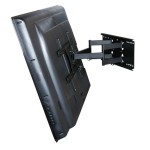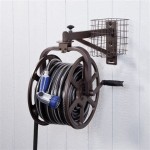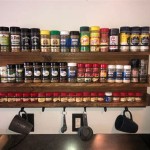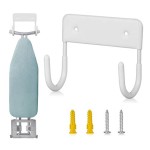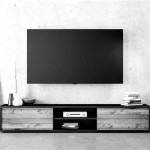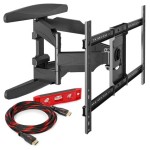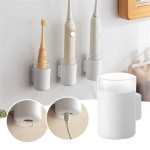Brick Wall Anchors for TV Mounts: A Comprehensive Guide
Mounting a television to a brick wall presents a unique set of challenges compared to mounting on drywall or wood studs. The inherent hardness and density of brick require specialized anchoring solutions to ensure the television is securely and safely supported. This article details the types of anchors suitable for brick walls, the installation process, and crucial considerations for a successful TV mount installation.
The primary concern when mounting anything to brick is the risk of the anchor pulling out or causing the brick itself to crumble or crack. Traditional drywall anchors are unsuitable for brick due to their design, which relies on spreading behind the drywall surface. Brick requires anchors that grip firmly within the brick itself, distributing the weight evenly and resisting pull-out forces. Selecting the appropriate anchor type is paramount to prevent potential damage and ensure the longevity of the television mount.
Before delving into specific anchor types, it's important to differentiate between solid brick and hollow brick (also known as brick veneer or clay tile). Solid brick offers greater holding power because the anchor can grip a substantial amount of material. Hollow brick, however, is more fragile and requires anchors that expand or grip the inner walls of the cavity. Identifying the type of brick is a critical first step in the installation process.
The weight of the television is also a significant factor in anchor selection. Heavier televisions necessitate stronger and more robust anchors to prevent sagging or detachment. Consult the television manufacturer's specifications to determine the weight of the unit and select anchors with a weight rating that exceeds the television's weight. A safety margin is always recommended to account for potential stress and vibration.
Furthermore, consider the type of TV mount being used. Full-motion mounts, which allow the television to be extended and swiveled, exert greater leverage on the anchors compared to fixed mounts. This increased leverage requires anchors with a higher pull-out strength to accommodate the dynamic forces applied by the mount.
Key Considerations Before Anchor Selection
Prior to choosing anchors for a TV mount installation on a brick wall, several critical factors must be assessed. These factors directly influence the type of anchor required and the overall success of the mounting project.
Brick Type Identification: Determining whether the brick is solid or hollow is the foundational step. Solid brick offers the best holding power and allows for a wider range of anchor options. Hollow brick necessitates specialized anchors designed to expand within the cavity or grip the inner walls. A simple test involves drilling a small pilot hole. If the drill bit encounters solid resistance and produces brick dust, the brick is likely solid. If the bit passes through easily and encounters a void, the brick is likely hollow.
Television Weight: The weight of the television directly dictates the required strength of the anchors. Consult the television's specifications to determine its weight and select anchors with a weight rating that significantly exceeds this value. It's advisable to add a safety factor of at least 20% to the television's weight to account for dynamic forces and potential stress on the anchors.
Mount Type: The type of TV mount significantly impacts the forces exerted on the anchors. Fixed mounts, which hold the television flush against the wall, distribute the weight evenly. Full-motion mounts, which allow for extension and swiveling, create leverage and exert greater pull-out forces. Full-motion mounts require stronger anchors with higher pull-out strength ratings.
Brick Condition: The condition of the brick is crucial. Cracked, crumbling, or damaged brick will not provide a secure hold for any anchor. If the brick is damaged, it may be necessary to repair or replace the affected bricks before attempting to mount the television. Consider using a larger mounting plate that spans across multiple bricks to distribute the weight more evenly and avoid stressing weakened areas.
Anchor Placement: Proper anchor placement is essential for maximizing holding power and preventing damage to the brick. Avoid drilling close to the edges of bricks or near mortar joints, as these areas are more prone to cracking. Staggering the anchors can also help distribute the weight more evenly and reduce stress on individual bricks.
Types of Anchors Suitable for Brick Walls
Several types of anchors are specifically designed for use in brick walls. Each type offers different levels of holding power and is suitable for varying weights and mount types.
Sleeve Anchors: Sleeve anchors are among the most common and versatile anchors for brick. These anchors consist of a threaded bolt, a sleeve, and a nut. As the bolt is tightened, the sleeve expands, gripping the walls of the hole. Sleeve anchors provide excellent holding power in solid brick and are suitable for medium to heavy television sets and fixed or tilting mounts. Be sure to select a sleeve anchor with a length appropriate for the thickness of the brick and the depth of the mounting bracket.
Wedge Anchors: Wedge anchors are another robust option for solid brick. These anchors feature a threaded bolt with a wedge-shaped expansion mechanism at the end. As the bolt is tightened, the wedge is pulled into the anchor body, causing it to expand and grip the surrounding brick. Wedge anchors are particularly well-suited for heavy televisions and full-motion mounts due to their high pull-out strength. Proper installation requires drilling a hole that is precisely the correct diameter for the anchor.
Hammer Drive Anchors: Hammer drive anchors are designed for quick and easy installation in solid brick. These anchors feature a pin that is hammered into the anchor body, causing it to expand and grip the surrounding material. Hammer drive anchors are suitable for lighter televisions and fixed mounts where speed of installation is a priority. However, they generally offer less holding power than sleeve or wedge anchors.
Tapcon Screws: Tapcon screws are self-tapping concrete screws that can be used in brick. These screws are designed to cut threads into the brick as they are driven in, providing a secure hold. Tapcon screws are suitable for light to medium weight televisions and fixed mounts. Pilot holes are required, and the screw diameter should be carefully matched to the pilot hole size to ensure proper grip.
Toggle Bolts: While less common for brick, toggle bolts can be used effectively in hollow brick or brick veneer. Toggle bolts consist of a bolt and a spring-loaded toggle that folds down to pass through the hole and then expands inside the cavity. The toggle provides a large bearing surface that distributes the weight over a wider area. Toggle bolts are a good option for hollow brick where other anchor types may not provide sufficient holding power.
Concrete Screws: Similar to Tapcon screws, concrete screws are designed to directly thread into concrete or brick. They require pre-drilling a pilot hole and are typically used for light to moderate loads. Their advantage is that they can be easily removed and re-inserted without compromising the holding power.
Installation Process and Essential Steps
The installation process for mounting a television to a brick wall involves several critical steps that must be performed accurately to ensure a secure and safe installation.
Planning and Marking: Begin by carefully planning the television's placement on the wall. Use a level to ensure the mount will be perfectly horizontal. Mark the locations for the anchor holes using a pencil or marker. Double-check the measurements to ensure the television will be positioned correctly.
Drilling Pilot Holes: Using a hammer drill with a masonry bit, drill pilot holes at the marked locations. The diameter of the drill bit should match the recommended size for the chosen anchor. Drill straight and apply consistent pressure. For solid brick, drill deep enough to accommodate the full length of the anchor. For hollow brick, be careful not to drill through the back wall of the cavity.
Cleaning the Holes: After drilling, thoroughly clean the holes using a brush or compressed air to remove any debris or brick dust. This will ensure that the anchors can seat properly and achieve maximum grip.
Installing the Anchors: Insert the chosen anchors into the pilot holes. Follow the manufacturer's instructions for proper installation. For sleeve anchors and wedge anchors, tighten the bolts gradually to expand the sleeves or wedges. For hammer drive anchors, use a hammer to drive the pin flush with the anchor body. For Tapcon screws, use a drill or impact driver to drive the screws into the brick, ensuring they are snug but not overtightened.
Mounting the Bracket: Align the TV mount bracket with the installed anchors and attach it using the appropriate hardware. Tighten the bolts securely, but avoid overtightening, which could damage the brick or strip the threads. Double-check that the bracket is level before proceeding.
Attaching the Television: Carefully lift the television and attach it to the mounted bracket. Ensure that the television is securely fastened to the bracket according to the mount manufacturer's instructions. Verify that all connections are tight and that the television is stable.
Cable Management: Neatly manage the cables from the television, concealing them behind the unit or routing them through cable management channels. This will improve the aesthetics of the installation and prevent dangling wires from becoming a hazard.
Testing Stability: Before considering the installation complete, gently test the stability of the television by applying slight pressure to different points. Ensure that there is no excessive movement or wobbling. If any issues are detected, re-tighten the anchors or consider using larger or more robust anchors.
By carefully considering the factors outlined in this guide and following the recommended installation process, a television can be safely and securely mounted to a brick wall, providing years of reliable service.

Hang A Tv On Brick Or Concrete Wall Gardenfork Eclectic Diy

How To Install A Flat Screen Tv On Brick Wall Hunker

How To Mount A Tv On Brick Wall Mountyourbox

Full Motion Tv Mount For 17 39 Tvs Hanger Mounting Dream Md2463 L Mountingdream

How To Mount A Tv In Brick Wall Hang On Concrete Youtube

How To Mount A Tv On Brick Wall

How To Mount A Tv Brick Wall The Home Theater Diy

Barkan A Better Point Of View 13 In To 65 Full Motion 4 Movement Extremely Extendable Extra Long Flat Curved Tv Wall Mount Black Bm343xl The Home

Hang A Tv On Brick Or Concrete Wall Gardenfork Eclectic Diy

How To Mount A Tv Over Brick Fireplace And Hide The Wires Designing Vibes Interior Design Diy Lifestyle

